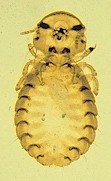I did mean that, I think the swelling is pus.
It's kinda firm. Not solid rock hard, but not squishy either. Should i try to squish it out?
(Ravyn, don't even.... Lol!)
Follow along with the video below to see how to install our site as a web app on your home screen.
Note: This feature may not be available in some browsers.
I did mean that, I think the swelling is pus.



I would try to squeeze it out and find the opening to his ear.It's kinda firm. Not solid rock hard, but not squishy either. Should i try to squish it out?
(Ravyn, don't even.... Lol!)
I would try to squeeze it out and find the opening to his ear.

There are many types of lice. Some live by the vent, but other species live under the wings, on the head and neck, on the legs, etc:Only in very bad infestation will they be under the wings or top of the head and neck.

Not a problem at all! Hope you have success treating the lice and the ear. Looks sore!!@gardenKate hope you don't mind me piggy-backing on your thread? I can start a new one if you prefer, no problem. Don't feel bad to tell me to go away.
You are wasting your spray/dust if you fluff it on the feathers. These critters are feeding by sucking blood, and mainly around the unfeathered area vent and maybe around the oil gland at the tail connection. Only in very bad infestation will they be under the wings or top of the head and neck. You must kill them by contact with them. This takes little spray or dust on those mites or lice. Lice are often killed with one dusting--spray (not to soak the area, just hit the lice (that will crawl into the feathered area around the bare skin, so you need to work fast) with the least spray you can get on their skin. Mites are most often sucking blood and do not let go so quickly, so you have a chance to hit them--that will kill any that are sprayed or dusted. Yes, at night or dusk, it is easiest to handle them from their roosts--a helper with flashlight is good. The critters do not move away as fast when in the dark. Mites are so small, some will crawl out of sight, so after 2 days, must be repeated--and a check in another 2-3 days will likely take care of them. Then, daytime, spray/dust the roosts, roost shelf, wall at the ends of the roosts. They will move to new areas in unbelievable time! But they can be controlled without much trouble. Oh,and if you have setting hens, mites love the warmth to explode in the nest. Check eggs every few days--mites will be speckles on setting eggs and maybe blood spots on the eggs from biting the belly of the setting hen! Take the hen out and spray or dust her belly--and vent and oil gland area. Spray her nest (straw or bedding with eggs removed carefully. They can be gently rolled when put back in the nest, but not covered with spray or dust. Eggs are porous and you do not want to allow the stuff to get in the eggs and harm the embryos! It is one of the tasks that we must do for our chickens health and comfort! Good luck!!!
